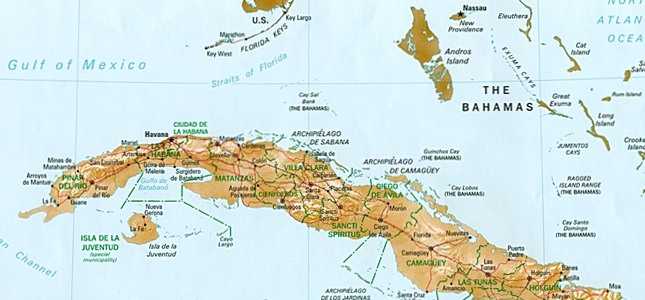
While we can understand why trade sanctions and travel restrictions were put in place in the first place, they’ve just felt a little mean-spirited and unforgiving in recent years, which is why the news is such a positive change of stance. The improved relationship hasn’t necessarily swept all of the problems away as such, so there’s still a long way to go before everything is hunky dory, but it’s definitely a positive move in the right direction.
The biggest negative that remains untouched as a result of the announcement to normalise relations with Cuba is the trade embargo that was put in place in 1961 following the nationalisation of US companies in Cuba. However, it’s clear that the announcements by Obama and Castro on the 17th December 2014 signals the possibility of it being lifted in the not too distant future, which would boost both economies in one fell swoop.
The first item in the plans to normalise relations is the news that Obama intends to re-open the U.S. embassy in Havana, which will then act as the country’s perm infant base in Cuba, helping to increase dialogue between the key stakeholders. The capital city lies just a hundred or so miles south of Key West in Florida, but for years now it might as well have been on the moon, but with an Embassy in place it should help to normalise the divide between everyday American’s and Cubans as much as it does for the governments.
This will be added to by plans to further relax travel between the two countries, but this will be confined to family visits; official U.S. government business, foreign governments, and certain intergovernmental organizations; journalist activity; professional research and meetings; education; religious activities; public performances, clinics, workshops, athletics and other competitions, and exhibitions; support for the Cuban people and humanitarian projects; activities of private foundations or research or educational institutes; exportation, importation, or transmission of information or information materials; and certain export transactions that may be considered for authorization under existing regulations and guidelines.
As you can probably see from the information above (sourced from The White House’s fact sheet on the announcement) things are a long way away still from the average American or Cuban being able to just jump on a flight for a holiday, but it’s a start. If things go well and relations do genuinely improve in the coming years it would undoubtedly be the next logical step to breaking down the barriers that have been in place since the sixties. Both America and Cuba are stunning places to visit, so being unable to must be frustrating, so it would be good to see this travesty removed at some time in the not too distant future.
There’s also an intention on the part of the United States government to review the designation of Cuba as a sponsor of terrorism, which has been in place since 1982 without any significant investigation as to the relevance of their continued placement on the list in recent years. Obama has asked John Kerry, his Secretary Of State, to review the designation and return with a report on the subject within the next six months, which should give them enough time before the 2016 election to act on the findings of the report potentially.
Financial restrictions are also the the sights of the U.S. government, within the tight constraints of expanded commercial sales and exports from the United States of building materials for private residential construction and agricultural equipment for small farmers for the most part. Licensed US travellers to Cuba will also be authorised to import additional goods in their return to the states to the tune of $400, and of this a maximum of $100 can be made up of tobacco products. The results of these two changes will be a boosted Cuban economy, the potential for the U.S. to promote private business and an easier process for United States citizens to get their hands on Cuban cigars.
Finally, the normalisation of relations has set out a plan to improve communications links between Cuba and the U.S. The aim is to increase the penetration of Internet access for the people of Cuba above its current 5% and this will be done through a process of relaxing the commercial export of certain consumer communications devices, related software, applications, hardware and services. In addition to this, telecomms providers will be allowed to establish the necessary systems and infrastructure in Cuba to provide commercial telephone and internet services.
The motivation for the change of stance is undoubtedly complex, but a big thanks has got to go to Pope Francis, who apparently helped to broker the talks that took place between Barack Obama and Raul Castro in the build-up to the announcement. However, other key factors in the move away from isolationist policies include economic benefits and the recognition on the current U.S. government’s part that the only way to instigate change was for them to change their stance away from what have been largely ineffective policies on Cuba.


